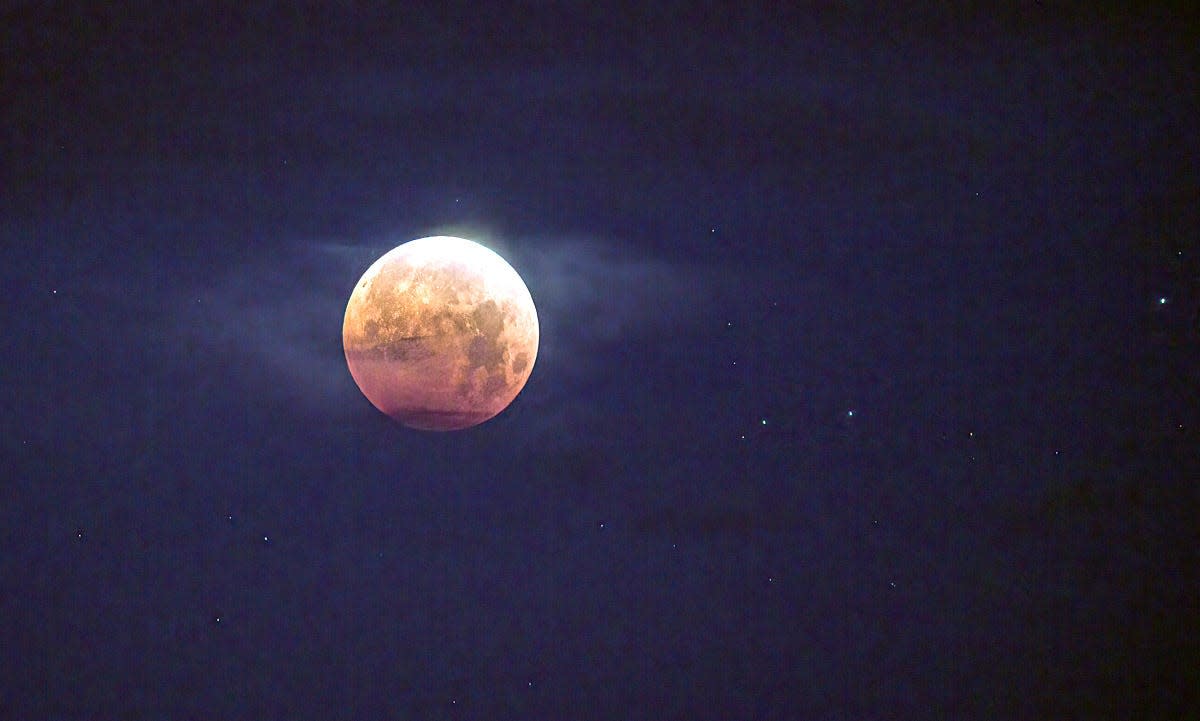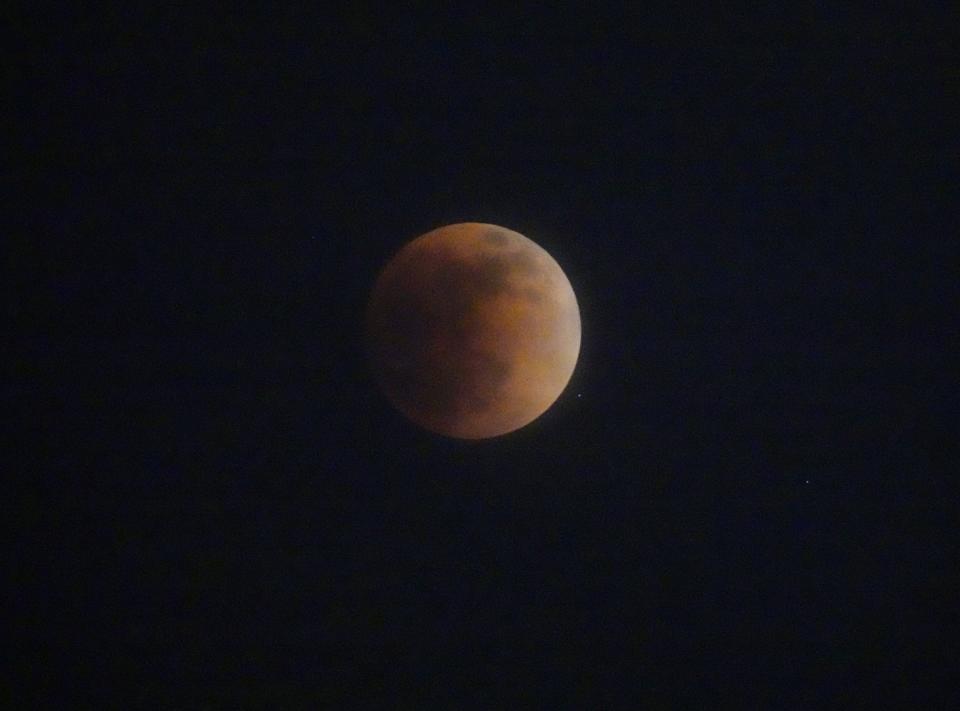Total lunar eclipse slated for Election day. Here's how to view it in Arizona.

A total lunar eclipse will be visible throughout Arizona during the early morning of Nov. 8, hours before voters head out to polls to cast their ballot in the general midterm elections.
This will be the second total lunar eclipse in 2022, but another one will not occur until 2025, according to NASA.
Here's what to know.
What is a total lunar eclipse?
A total lunar eclipse is one of three different types of lunar eclipses (penumbral, partial and total). Total lunar eclipses occur when the Earth is positioned well enough between the sun and the moon causing the Earth's shadow to engulf its only natural satellite.
Total lunar eclipses will always dawn a reddish hue dubbing them "Blood Moons," outside of scientific circles.
Arizonans were last treated to the spectacle in May of this year.
Arizona weather: Mostly clear skies expected across Arizona on Election Day
Why will the moon have a reddish hue?
NASA calls it Rayleigh Scattering. Colors such as blues and violets have much shorter wavelengths causing them to scatter easily as opposed to reds and oranges. The longer wavelengths of reds and oranges allow them to penetrate the Earth's atmosphere giving the Moon its reddish appearance.

"The Earth's atmosphere scatters blue light and so the light that, if you will, falls on the Moon is those reddish wavelengths," Mount Lemmon SkyCenter Director Alan Strauss told The Arizona Republic.
Additionally, the more dust or clouds present in the Earth's atmosphere at the time of the eclipse, the redder the moon will appear.
"The depth of that, how dark it is, depends on literally the content of the atmosphere," Strauss said. "If there's a massive volcanic eruption, that's going to make for a darker eclipse."
Planning for the moon: NASA practices for future mission near Flagstaff
When will it be visible?
The main event will begin around 3:16 a.m. on the morning of Nov. 8, when totality begins, NASA said.
Eclipses take place in phases though, so it requires patience for those who want to see it in its entirety. Avid night sky enjoyers will need to set their alarms for the late-night show beginning roughly at 1 a.m.
1:02 a.m.: Penumbral Eclipse begins
2:09 a.m.: Partial Eclipse begins
3:16 a.m. Total Eclipse begins
3:59 a.m.: Peak Eclipse
4:41 a.m.: Total Eclipse ends
5:49 a.m.: Partial Eclipse ends
6:56 a.m.: Penumbral Eclipse ends
All times are MST.
Where will it be most visible?
Arizona is situated right in the path of totality meaning those in the Copper State can witness the eclipse from beginning to end.
"You don't need to get out of the city at all," Strauss said. "The full moon is bright; you can see it from anywhere. As those partial phases begin to happen it is still very bright, you don't have to go anywhere. That's the beauty of the eclipse."
The forecast however may not be so beautiful for eclipse viewing come Nov. 8.
"It does look like we're gonna have some cloudiness around," said Austin Jamison, a meteorologist with the National Weather Service in Phoenix. "During the preceding day, it'll be pretty clear but we're anticipating a slow increase of cloudiness as the night goes on."
If you're unable to view the eclipse or want a different perspective, the Lowell Observatory in Flagstaff will be live streaming the eclipse on its YouTube channel beginning at 2 a.m.
Those looking to take it up a notch can purchase tickets for an overnight fundraising event located at the summit of Mt. Lemmon. Details about the event are listed here.
Reach breaking news reporter Kye Graves at klgraves@gannett.com or on Twitter @kyegraves
This article originally appeared on Arizona Republic: Arizonans are in for a lunar ecplise on Election Day. What to know

